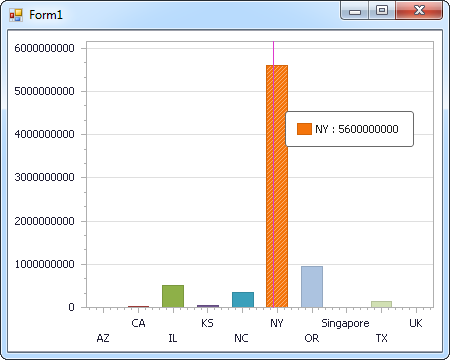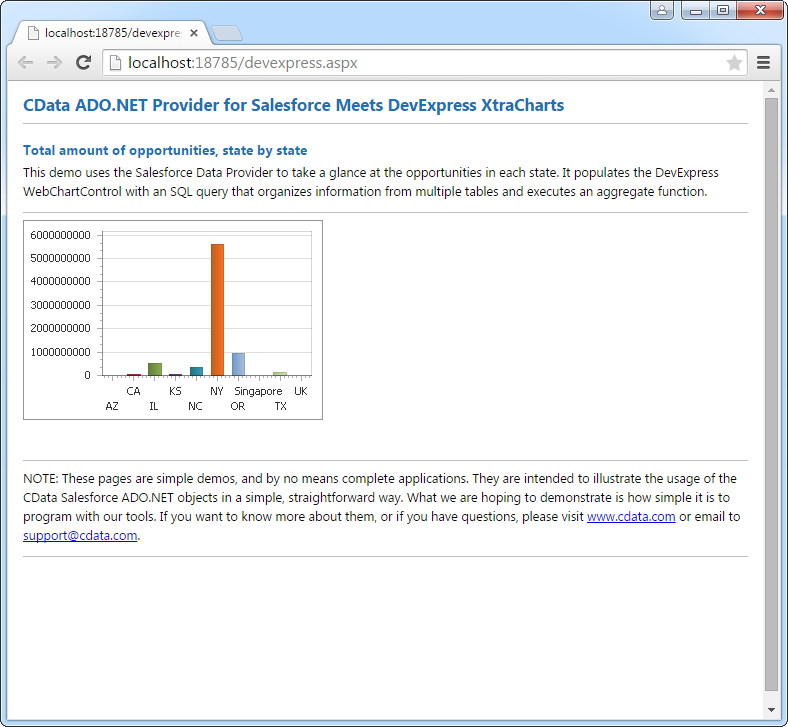Discover how a bimodal integration strategy can address the major data management challenges facing your organization today.
Get the Report →DataBind Email Data to the DevExpress Data Grid
Use the CData ADO.NET Provider for Email with the DevExpress Windows Forms and Web controls to provide Email data to a chart.
The ADO.NET Provider for Email by CData incorporates conventional ADO.NET data access components compatible with third-party controls. You can adhere to the standard ADO.NET data binding procedures to establish two-way access to real-time data through UI controls. This article will demonstrate the utilization of CData components for data binding with DevExpress UI Controls (Windows Forms and Web controls), specifically binding to a chart that visualizes live data.
The User and Password properties, under the Authentication section, must be set to valid credentials. The Server must be specified to retrieve emails and the SMTPServer must be specified to send emails.
Windows Forms Controls
The code below shows how to populate a DevExpress chart with Email data. The EmailDataAdapter binds to the Series property of the chart control. The Diagram property of the control defines the x- and y-axes as the column names.
using (EmailConnection connection = new EmailConnection(
"User=username@gmail.com;Password=password;Server=imap.gmail.com;Port=993;SMTP Server=smtp.gmail.com;SMTP Port=465;SSL Mode=EXPLICIT;Protocol=IMAP;Mailbox=Inbox;")) {
EmailDataAdapter dataAdapter = new EmailDataAdapter(
"SELECT Mailbox, RecentMessagesCount FROM Mailboxes", connection);
DataTable table = new DataTable();
dataAdapter.Fill(table);
DevExpress.XtraCharts.Series series = new DevExpress.XtraCharts.Series();
chartControl1.Series.Add(series);
series.DataSource = table;
series.ValueDataMembers.AddRange(new string[] { "RecentMessagesCount" });
series.ArgumentScaleType = DevExpress.XtraCharts.ScaleType.Qualitative;
series.ArgumentDataMember = "Mailbox";
series.ValueScaleType = DevExpress.XtraCharts.ScaleType.Numerical;
chartControl1.Legend.Visibility = DevExpress.Utils.DefaultBoolean.False;
((DevExpress.XtraCharts.SideBySideBarSeriesView)series.View).ColorEach = true;
}

Web Controls
The code below shows how to populate a DevExpress Web control with Email data. The EmailDataAdapter binds to the Series property of the chart; the Diagram property defines the x- and y-axes as the column names.
using DevExpress.XtraCharts;
using (EmailConnection connection = new EmailConnection(
"User=username@gmail.com;Password=password;Server=imap.gmail.com;Port=993;SMTP Server=smtp.gmail.com;SMTP Port=465;SSL Mode=EXPLICIT;Protocol=IMAP;Mailbox=Inbox;"))
{
EmailDataAdapter EmailDataAdapter1 = new EmailDataAdapter("SELECT Mailbox, RecentMessagesCount FROM Mailboxes", connection);
DataTable table = new DataTable();
EmailDataAdapter1.Fill(table);
DevExpress.XtraCharts.Series series = new Series("Series1", ViewType.Bar);
WebChartControl1.Series.Add(series);
series.DataSource = table;
series.ValueDataMembers.AddRange(new string[] { "RecentMessagesCount" });
series.ArgumentScaleType = ScaleType.Qualitative;
series.ArgumentDataMember = "Mailbox";
series.ValueScaleType = ScaleType.Numerical;
((DevExpress.XtraCharts.SideBySideBarSeriesView)series.View).ColorEach = true;
}







